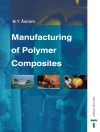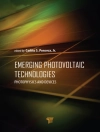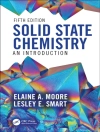This book presents both the fundamentals concepts and latest achievements of a field that is growing in importance since it represents a possible solution for global energy problems. It focuses on an atomic-level understanding of heterogeneous catalysis involved in important energy conversion processes. It presents a concise picture for the entire area of heterogeneous catalysis with vision at the atomic- and nano- scales, from synthesis, ex-situ and in-situ characterization, catalytic activity and selectivity, to mechanistic understanding based on experimental exploration and theoretical simulation.
The book:
- Addresses heterogeneous catalysis, one of the crucial technologies employed within the chemical and energy industries
- Presents the recent advances in the synthesis and characterization of nanocatalysts as well as a mechanistic understanding of catalysis at atomic level for important processes of energy conversion
- Provides a foundation for the potential design of revolutionarily new technical catalysts and thus the further development of efficient technologies for the global energy economy
- Includes both theoretical studies and experimental exploration
- Is useful as both a textbook for graduate and undergraduate students and a reference book for scientists and engineers in chemistry, materials science, and chemical engineering
Innehållsförteckning
Contributors xiii
1 Introduction 1
Franklin (Feng) Tao, William F. Schneider, and Prashant V. Kamat
2 Chemical Synthesis of Nanoscale Heterogeneous Catalysts 9
Jianbo Wu and Hong Yang
2.1 Introduction 9
2.2 Brief Overview of Heterogeneous Catalysts 10
2.3 Chemical Synthetic Approaches 11
2.3.1 Colloidal Synthesis 11
2.3.2 Shape Control of Catalysts in Colloidal Synthesis 12
2.3.3 Control of Crystalline Phase of Intermetallic Nanostructures 14
2.3.4 Other Modes of Formation for Complex Nanostructures 17
2.4 Core–Shell Nanoparticles and Controls of Surface Compositions and Surface Atomic Arrangements 21
2.4.1 New Development on the Preparation of Colloidal Core–Shell Nanoparticles 21
2.4.2 Electrochemical Methods to Core–Shell Nanostructures 22
2.4.3 Control of Surface Composition via Surface Segregation 24
2.5 Summary 25
3 Physical Fabrication of Nanostructured Heterogeneous Catalysts 31
Chunrong Yin, Eric C. Tyo, and Stefan Vajda
3.1 Introduction 31
3.2 Cluster Sources 34
3.2.1 T hermal Vaporization Source 34
3.2.2 Laser Ablation Source 36
3.2.3 Magnetron Cluster Source 37
3.2.4 Arc Cluster Ion Source 38
3.3 Mass Analyzers 39
3.3.1 Neutral Cluster Beams 40
3.3.2 Quadrupole Mass Analyzer 41
3.3.3 Lateral TOF Mass Filter 42
3.3.4 Magnetic Sector Mass Selector 43
3.3.5 Quadrupole Deflector (Bender) 44
3.4 Survey of Cluster Deposition Apparatuses in Catalysis Studies 44
3.4.1 Laser Ablation Source with a Quadrupole Mass Analyzer at Argonne National Lab 44
3.4.2 ACIS with a Quadrupole Deflector at the Universität Rostock 46
3.4.3 Magnetron Cluster Source with a Lateral TOF Mass Filter at the University of Birmingham 47
3.4.4 Laser Ablation Cluster Source with a Quadrupole Mass Selector at the Technische Universität München 48
3.4.5 Laser Ablation Cluster Source with a Quadrupole Mass Analyzer at the University of Utah 49
3.4.6 Laser Ablation Cluster Source with a Magnetic Sector Mass Selector at the University of California, Santa Barbara 49
3.4.7 Magnetron Cluster Source with a Quadrupole Mass Filter at the Toyota Technological Institute 51
3.4.8 PACIS with a Magnetic Sector Mass Selector at Universität Konstanz 52
3.4.9 Magnetron Cluster Source with a Magnetic Sector at Johns Hopkins University 53
3.4.10 Magnetron Cluster Source with a Magnetic Sector at HZB 53
3.4.11 Magnetron Sputtering Source with a Quadrupole Mass Filter at the Technical University of Denmark 54
3.4.12 CORDIS with a Quadrupole Mass Filter at the Lausanne Group 56
3.4.13 Electron Impact Source with a Quadrupole Mass Selector at the Universität Karlsruhe 56
3.4.14 CORDIS with a Quadrupole Mass Analyzer at the Universität Ulm 58
3.4.15 Magnetron Cluster Source with a Lateral TOF Mass Filter at the Universität Dortmund 59
3.4.16 Z-Spray Source with a Quadrupole Mass Filter for Gas-Phase Investigations at FELIX 60
3.4.17 Laser Ablation Source with an Ion Cyclotron Resonance Mass Spectrometer for Gas-Phase Investigations at the Technische Universität Berlin 61
4 Ex Situ Characterization 69
Minghua Qiao, Songhai Xie, Yan Pei, and Kangnian Fan
4.1 Introduction 69
4.2 Ex Situ Characterization Techniques 70
4.2.1 X-Ray Absorption Spectroscopy 71
4.2.2 Electron Spectroscopy 72
4.2.3 Electron Microscopy 74
4.2.4 Scanning Probe Microscopy 75
4.2.5 Mössbauer Spectroscopy 76
4.3 Some Examples on Ex Situ Characterization of Nanocatalysts for Energy Applications 77
4.3.1 Illustrating Structural and Electronic Properties of Complex Nanocatalysts 77
4.3.2 Elucidating Structural Characteristics of Catalysts at the Nanometer or Atomic Level 81
4.3.3 Pinpointing the Nature of the Active Sites on Nanocatalysts 85
4.4 Conclusions 88
5 Applications of Soft X-Ray Absorption Spectroscopy for In Situ Studies of Catalysts at Nanoscale 93
Xingyi Deng, Xiaoli Gu, and Franklin (Feng) Tao
5.1 Introduction 93
5.2 In Situ SXAS under Reaction Conditions 96
5.3 Examples of In Situ SXAS Studies under Reaction Conditions Using Reaction Cells 99
5.3.1 Atmospheric Corrosion of Metal Films 99
5.3.2 Cobalt Nanoparticles under Reaction Conditions 101
5.3.3 Electrochemical Corrosion of Cu in Aqueous Na HCO3 Solution 108
5.4 Summary 112
6 First-Principles Approaches to Understanding Heterogeneous Catalysis 115
Dorrell C. Mc Calman and William F. Schneider
6.1 Introduction 115
6.2 Computational Models 116
6.2.1 Electronic Structure Methods 116
6.2.2 System Models 117
6.3 NOx Reduction 118
6.4 Adsorption at Metal Surfaces 119
6.4.1 Neutral Adsorbates 119
6.4.2 Charged Adsorbates 122
6.5 Elementary Surface Reactions Between Adsorbates 125
6.5.1 Reaction Thermodynamics 125
6.5.2 Reaction Kinetics 129
6.6 Coverage Effects on Reaction and Activation Energies at Metal Surfaces 131
6.7 Summary 135
7 Computational Screening for Improved Heterogeneous Catalysts and Electrocatalysts 139
Jeffrey Greeley
7.1 Introduction 139
7.2 T rends-Based Studies in Computational Catalysis 140
7.2.1 Early Groundwork for Computational Catalyst Screening 140
7.2.2 Volcano Plots and Rate Theory Models 141
7.2.3 Scaling Relations, BEP Relations, and Descriptor Determination 144
7.3 Computational Screening of Heterogeneous Catalysts and Electrocatalysts 148
7.3.1 Computational Catalyst Screening Strategies 149
7.4 Challenges and New Frontiers in Computational Catalyst Screening 153
7.5 Conclusions 155
8 Catalytic Kinetics and Dynamics 161
Rafael C. Catapan, Matthew A. Christiansen, Amir A. M. Oliveira, and Dionisios G. Vlachos
8.1 Introduction 161
8.2 Basics of Catalyst Functionality, Mechanisms, and Elementary Reactions on Surfaces 163
8.3 T ransition State Theory, Collision Theory, and Rate Constants 166
8.4 Density Functional Theory Calculations 168
8.4.1 Calculation of Energetics and Coverage Effects 169
8.4.2 Calculation of Vibrational Frequencies 172
8.5 T hermodynamic Consistency of the DFT-Predicted Energetics 172
8.6 State Properties from Statistical Thermodynamics 176
8.6.1 Strongly Bound Adsorbates 177
8.6.2 Weakly Bound Adsorbates 177
8.7 Semiempirical Methods for Predicting Thermodynamic Properties and Kinetic Parameters 178
8.7.1 Linear Scaling Relationships 178
8.7.2 Heat Capacity and Surface Entropy Estimation 179
8.7.3 Brønsted-Evans-Polanyi Relationships 180
8.8 Analysis Tools for Microkinetic Modeling 181
8.8.1 Rates in Microkinetic Modeling 181
8.8.2 Reaction Path Analysis and Partial Equilibrium Analysis 181
8.8.3 Rate-Determining Steps, Most Important Surface Intermediates, and Most Abundant Surface Intermediates 184
8.8.4 Calculation of the Overall Reaction Order and Apparent Activation Energy 186
8.9 Concluding Remarks 187
9 Catalysts for Biofuels 191
Gregory T. Neumann, Danielle Garcia, and Jason C. Hicks
9.1 Introduction 191
9.2 Lignocellulosic Biomass 192
9.2.1 Cellulose 192
9.2.2 Hemicellulose 194
9.2.3 Lignin 195
9.3 Carbohydrate Upgrading 195
9.3.1 Zeolitic Upgrading of Cellulosic Feedstocks 196
9.3.2 Levulinic Acid Upgrading 199
9.3.3 GVL Upgrading 201
9.3.4 Aqueous-Phase Processing 202
9.4 Lignin Conversion 205
9.4.1 Zeolite Upgrading of Lignin Feedstocks 206
9.4.2 Catalysts for Hydrodeoxygenation of Lignin 208
9.4.3 Selective Unsupported Catalyst for Lignin Depolymerization 211
9.5 Continued Efforts for the Development of Robust Catalysts 212
10 Development of New Gold Catalysts for Removing CO from H2 217
Zhen Ma, Franklin (Feng) Tao, and Xiaoli Gu
10.1 Introduction 217
10.2 General Description of Catalyst Development 218
10.3 Development of WGS catalysts 220
10.3.1 Initially Developed Catalysts 220
10.3.2 Fe2O3-Based Gold Catalysts 221
10.3.3 Ce O2-Based Gold Catalysts 221
10.3.4 Ti O2- or Zr O2-Based Gold Catalysts 223
10.3.5 Mixed-Oxide Supports with 1:1 Composition 223
10.3.6 Bimetallic Catalysts 224
10.4 Development of New Gold Catalysts for PROX 225
10.4.1 General Considerations 225
10.4.2 Ce O2-Based Gold Catalysts 226
10.4.3 Ti O2-Based Gold Catalysts 227
10.4.4 Al2O3-Based Gold Catalysts 228
10.4.5 Mixed Oxide Supports with 1:1 Composition 228
10.4.6 Other Oxide-Based Gold Catalysts 229
10.4.7 Supported Bimetallic catalysts 229
10.5 Perspectives 229
11 Photocatalysis in Generation of Hydrogen from Water 239
Kazuhiro Takanabe and Kazunari Domen
11.1 Solar Energy Conversion 239
11.1.1 Solar Energy Conversion Technology for Producing Fuels and Chemicals 239
11.1.2 Solar Spectrum and STH Efficiency 242
11.2 Semiconductor Particles: Optical and Electronic Nature 244
11.2.1 Reaction Sequence and Principles of Overall Water Splitting and Reaction Step Timescales 244
11.2.2 Number of Photons Striking a Single Particle 245
11.2.3 Absorption Depth of Light Incident on Powder Photocatalyst 247
11.2.4 Degree of Band Bending in Semiconductor Powder 248
11.2.5 Band Gap and Flat-Band Potential of Semiconductor 250
11.3 Photocatalyst Materials for Overall Water Splitting: UV to Visible Light Response 251
11.3.1 UV Photocatalysts: Oxides 251
11.3.2 Visible-Light Photocatalysts: Band Engineering of Semiconductor Materials Containing Transition Metals 253
11.3.3 Visible-Light Photocatalysts: Organic Semiconductors as Water-Splitting Photocatalysts 255
11.3.4 Z-Scheme Approach: Two-Photon Process 257
11.3.5 Defects and Recombination in Semiconductor Bulk 257
11.4 Cocatalysts for Photocatalytic Overall Water Splitting 259
11.4.1 Metal Nanoparticles as Hydrogen Evolution Cocatalysts: Novel Core/Shell Structure 259
11.4.2 Reaction Rate Expression on Active Catalytic Centers for Redox Reaction in Solution 261
11.4.3 Measurement of Potentials at Semiconductor and Metal Particles Under Irradiation 264
11.4.4 Metal Oxides as Oxygen Evolution Cocatalyst 266
11.5 Concluding Remarks 268
12 Photocatalysis in Conversion of Greenhouse Gases 271
Kentaro Teramura and Tsunehiro Tanaka
12.1 Introduction 271
12.2 Outline of Photocatalytic Conversion of CO2 273
12.3 Reaction Mechanism for the Photocatalytic Conversion of CO2 276
12.3.1 Adsorption of CO2 and H2 276
12.3.2 Assignment of Adsorbed Species by FT-IR Spectroscopy 279
12.3.3 Observation of Photoactive Species by Photoluminescence (PL) and Electron Paramagnetic Resonance (EPR) Spectroscopies 281
12.4 Summary 283
13 Electrocatalyst Design in Proton Exchange Membrane Fuel Cells for Automotive Application 285
Anusorn Kongkanand, Wenbin Gu, and Frederick T. Wagner
13.1 Introduction 285
13.2 Advanced Electrocatalysts 288
13.2.1 Pt-Alloy and Dealloyed Catalysts 288
13.2.2 Pt Monolayer Catalysts 290
13.2.3 Continuous-Layer Catalysts 293
13.2.4 Controlled Crystal Face Catalysts 296
13.2.5 Hollow Pt Catalysts 298
13.3 Electrode Designs 299
13.3.1 Dispersed-Catalyst Electrodes 299
13.3.2 NSTF Electrodes 302
13.4 Concluding Remarks 307
Index 315
Om författaren
Franklin (Feng) Tao, Ph D, is a tenured Miller associate professor of chemical engineering and chemistry at the University of Kansas. He leads a research group focusing on synthesis, evaluation of catalytic performance, and in-situ characterization of heterogeneous catalysts at nanoscale for chemical and energy transformations. He has published almost 100 papers and three books with Wiley and RSC.
William F. Schneider, Ph D, is a Professor of Chemical and Biomolecular Engineering at the University of Notre Dame. His research interests are in the application of theory and simulation to probe and predict the molecular details of surface chemical reactivity and catalysis. He has co-authored more than 130 papers and book chapters.
Prashant V. Kamat, Ph D, is Rev. John A. Zahm Professor of Science in the Department of Chemistry and Biochemistry, and Radiation Laboratory at the University of Notre Dame. For nearly three decades, he has worked to build bridges between physical chemistry and material science by developing semiconductor and metal nanostructure based hybrid assemblies for cleaner and efficient light energy conversion. He has co-authored more than 450 papers, reviews and book chapters.












